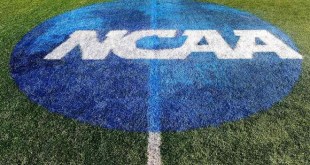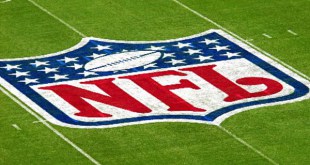Nearly three years ago, the official process of changing the Rules of Golf to prohibit the anchoring of clubs when making strokes began. Some players indicated an interest in legally challenging the ban, even retaining legal counsel to explore possible litigation. But now the ban is here, and the legal fight seems to have gone nowhere.[1] How does the anchoring ban affect tour pros and what happened to the legal fight the golf world thought was coming?
Background
In 1983, Senior PGA Tour player Charlie Owens sought to solve his putting problems by welding two shafts together to create the “Slim Jim Putter,” an early long putter. Five years later, another Senior PGA Tour player, Orville Moody, changed to a long-shafted putter to improve his putting, eventually becoming the tour leader in putting and winning the 1989 U.S. Senior Open. Just two years later in 1991, Rocco Mediate became the first player to win a PGA Tour event using an anchored, long-shafted putter.[2] Keegan Bradley became the first player to win a major championship using an anchored putter when he won the 2011 PGA Championship. At the time, CBS golf analyst Peter Kostis predicted, “You’re going to see a change in putting.” Since Keegan’s victory in 2011, professional golfers have won golf’s greatest titles with anchored putters: the Open Championship, the U.S. Open, the Masters, and the FedEx Cup (the PGA Tour’s playoffs).[3]
On May 21, 2013, two of golf’s governing bodies, the United States Golf Association (USGA) and The Royal & Ancient Golf Club of St. Andrews (R&A), announced the adoption of Rule 14-1b of the Rules of Golf, prohibiting the anchoring of a club in making a stroke. The rule was originally proposed on November 28, 2012, and it recently took effect on January 1, 2016.
What exactly is the rule? Here’s the full text:
In making a stroke, the player must not anchor the club, either “directly” or by use of an “anchor point.”
Note 1: The club is anchored “directly” when the player intentionally holds the club or a gripping hand in contact with any part of his body, except that the player may hold the club or a gripping hand against a hand or forearm.
Note 2: An “anchor point” exists when the player intentionally holds a forearm in contact with any part of his body to establish a gripping hand as a stable point around which the other hand may swing the club.”
The Rule does not alter current equipment rules and still permits belly-length and long putters.[4]
However, the rule does not affect putting strokes such as Matt Kuchar’s, in which the grip of the putter is braced against one’s forearm. USGA President Glen Nager stated that the Rule “is necessary to preserve one of the important traditions and challenges of the game – that the player freely swing the entire club.” Nager also argued that the Rule “eliminates the possible advantage that anchoring provides, ensuring that players of all skill levels face the same challenge inherent in the game of golf.”
Initially, the PGA Tour opposed the ban, but then it later voted to adopt it. A number of players, including Ernie Els, spoke out against the proposed ban. Several, including Tim Clark and Adam Scott, sought legal counsel to consider litigation. What would the players’ arguments have been and why did they choose to forego litigation?
The Antitrust Argument
One tactic pro golfers could have used to challenge the ban would have been to file a lawsuit under Section 1 of the Sherman Antitrust Act arguing that the ban makes golf less competitive by excluding from competition some golfers who rely on anchored putters.
Under antitrust law, some restraints on industry are rejected due to their anticompetitive effects. So called “per se” analysis finds certain restraints illegal on their face, normally concerted activity so likely to be anticompetitive, it cannot be justified by any procompetitive effects. The “rule of reason” test involves a thorough balancing of a restraint’s anticompetitive and procompetitive effects. In sports cases, courts generally require plaintiffs to meet the full rule of reason test because the unique nature of sports competition often requires some competitive restraints in order for the sport (and therefore competition within the sport) to flourish.[5] Organized sports require agreement on rules including rules that relate to equipment in order to maintain a level playing field for all participants.
The U.S. Tennis Association faced a similar challenge when it banned the use of spaghetti string rackets and stringing systems.[6] The Eighth Circuit found that sports governing bodies have wide latitude in making rules so long as the rule is rationally related to the goal of conducting organized competitions. Courts would likely have deferred to the rule-making authority of golf’s governing bodies in an antitrust suit from players, rendering an antitrust suit futile.
Club manufacturers could also have made a similar argument claiming that the rule excludes certain products from the market (and certain manufacturers who produce anchored clubs), thus hurting competition. For example, in the early 1990s, a group of golfers joined with the golf equipment manufacturer Ping to sue over a rule banning Ping’s square grooves.[7] After Ping won a preliminary injunction against the rule, the USGA and PGA Tour eventually settled the case, allowing players to use the clubs but requiring Ping to make future models using different types of grooves.
However, this argument from manufacturers was essentially precluded by the way the anchoring rule was written. Players are not prohibited from using certain clubs, only from using clubs in a certain way. Therefore, club manufacturers are not prevented from making and selling any particular types of clubs; players are merely prohibited from a particular putting style.
The Disability Argument
Players could have perhaps made a claim under the Americans with Disabilities Act (ADA) as well. The ADA protects those who have recognized disabilities and who are denied either a reasonable accommodation by an employer or access to public facilities or services based on the disability. They could have argued that the anchored putter is a reasonable accommodation for a disability. For example, Masters champion Fred Couples used an anchored belly putter to decrease stress on his back after a long history of back injuries.
More than a decade ago, Casey Martin sued the PGA Tour under the ADA for the right to use a golf cart on tour.[8] The case went all the way to the Supreme Court, which held (in a controversial decision) that the PGA Tour’s refusal to accommodate Martin violated the ADA.[9] That decision would likely not have been helpful to golfers challenging the anchoring ban. Most golfers who used anchored putters do not have a recognized disability that would require an accommodation. Moreover, Martin prevailed because the Court ruled that walking the course was not an essential element of the game of golf. Golf’s governing bodies would likely have stronger footing in a challenge of the anchoring ban because what constitutes a stroke goes directly to the heart of what it means to play the sport.
Conclusion
One question that often arises when players are left without recourse is how to prevent these situations in the future (e.g. rule changes that some players oppose). The absence of a union limits the ability of golfers to challenge unilaterally instituted rules in the game. Sports such as the NFL which have collective bargaining agreements must make changes affecting terms and conditions of employment with approval from the players’ unions. However, golf’s governing bodies can make unilateral rule changes without player approval. That means players cannot avail themselves of labor law as a defense or traditional breach of contract claims. Although golfers generally have more freedom by being considered independent contractors rather than employees, this is a situation in which unionization could have allowed players to exercise more influence on the rules affecting their game.
After examining the main avenues of litigation available to professional golfers, you can see why they decided to back down from a legal fight. Based on the subject of the rule, the way it is written, and the way professional golf is structured, there simply are not any arguments golfers could have used that would have given them a reasonable chance of success. Now that the rule is in effect, anchored putting is a thing of the past for professional golf. With the PGA Tour’s season about to begin in earnest, we’ll soon see how players who have used anchored putters are adapting to new putting styles or different clubs.
[1] Those interested in playing tips related to the ban can read this Golf Digest article.
[2] Mediate called himself “the anti-Christ of putting then.”
[3] Bill Haas won the 2011 FedEx Cup, Webb Simpson won the 2012 U.S. Open, Ernie Els won the 2012 British Open, and Adam Scott won the 2013 Masters.
[4] For more, see the USGA’s explanation.
[5] In NCAA v. Board of Regents, 468 U.S. 85 (1984), the U.S. Supreme Court discussed the unique nature of organized sports, calling them “an industry in which horizontal restraints on competition are essential if the product is to be available at all.”
[6] Gunter Harz Sports, Inc. v. U. S. Tennis Ass’n, Inc., 665 F.2d 222 (8th Cir. 1981).
[7] Gilder v. PGA Tour, Inc., 936 F.2d 417 (9th Cir. 1991)
[8] PGA Tour, Inc. v. Martin, 532 U.S. 661 (2001).
[9] The most famous aspect of the decision is Justice Scalia’s vigorous dissent, which is a must-read for anyone interested in sports law.
 The Sports Esquires Putting Sports on Trial
The Sports Esquires Putting Sports on Trial


